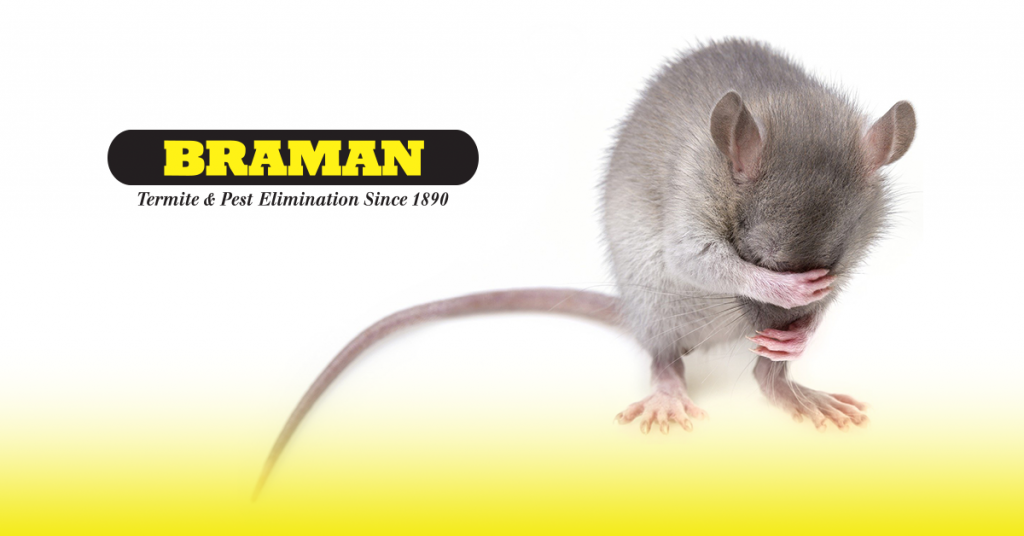As the weather cools, several critters start seeking warmer homes. In our area, we tend to see an increase in mice, rats, spiders and cockroaches looking for food and shelter. It’s possible we’ll see an even bigger spike than usual this year in residential infestations, as more restaurants are closing or offering limited service, reducing food sources. Rodent infestations can quickly go from a small problem to a big one, and the odds are, if you’ve spotted a mouse in your house, he’s not alone.
Rodents pose risks to both your health and property. An online research study conducted between January 2018 and July 2019 by Advanced Symbolics Inc. using a representative sample of 274,500 Americans revealed that rats are America’s biggest pest concern for health and home issues, and that rodents are spotted almost twice as often in bathrooms than in any other area in the home.
Rodents can spread 200 different pathogens and 35 diseases to humans. While they are a problem year-round, they invade an estimated 21 million U.S. homes each fall and winter, making proper identification crucial to preventing an infestation.
6 Signs of Unwanted Rodent Tenants
If you suspect you have unwelcomed rodent tenants lurking behind your walls, look for these signs:
- Droppings: Fecal pellets are often left behind in places where food is stored, such as the kitchen, cabinets, countertops and pantries, as well as under sinks, inside cardboard boxes and along baseboards.
- Gnaw marks: Rodents can chew through almost any type of material, including plastic and lead pipes, to obtain food or water. Look for food packages with evidence of gnawing. They are also known to gnaw on wires behind walls, increasing the risk of fire in the home. Check for signs in your garage as well, since they can nest in cars and chew on wires and upholstery.
- Nests: Rodents prefer to nest in dark, secluded areas where there is little chance of disturbance. House mice like to build nests out of items like shredded paper products, cotton, wall insulation and fabrics. They may even steal linens, like dish towels, to build a nest.
- Tracks or rub marks: Rats tend to leave dark grease or dirt marks from their oily fur along walls and floorboards as they follow a trail throughout the home between their nest and food.
- Strange noises: Hearing strange noises in the wall, especially at night, can often be attributed to a family of rodents scurrying about the house, between the walls and up in attics.
- An actual rodent: Mice breed rapidly, so if you’ve spotted a mouse, it’s likely there are more. A single female house mouse can give birth to a half dozen babies every three weeks, up to 35 young per year. And, theoretically, one male and one female mouse can give rise to 5,000 mice in a year’s time.
Issue a Quick Eviction
If you suspect a mouse or rat infestation, call us quickly. Rodents carry food poisoning bacteria like salmonella, ticks infected with Lyme disease, Hantavirus and more. If they get into your food supply, they can quickly contaminate food with their urine, fecal droppings and hair. In fact, they contaminate 10 times more food than they eat.
There are steps you can take to prevent an infestation, but if they get past your defenses, give us a call.

